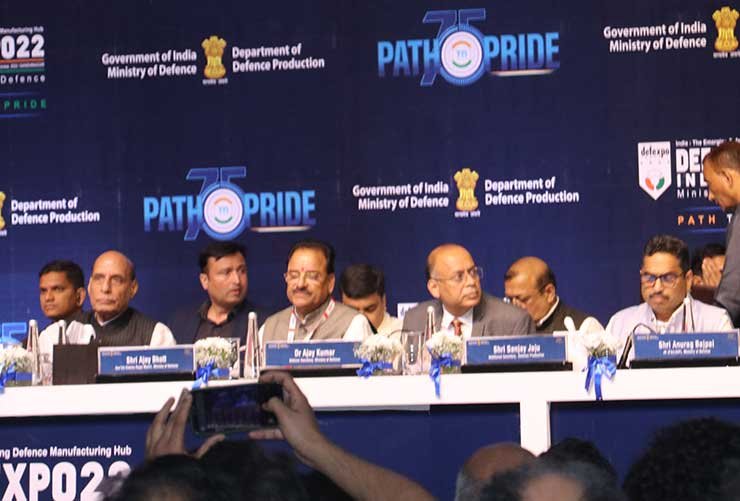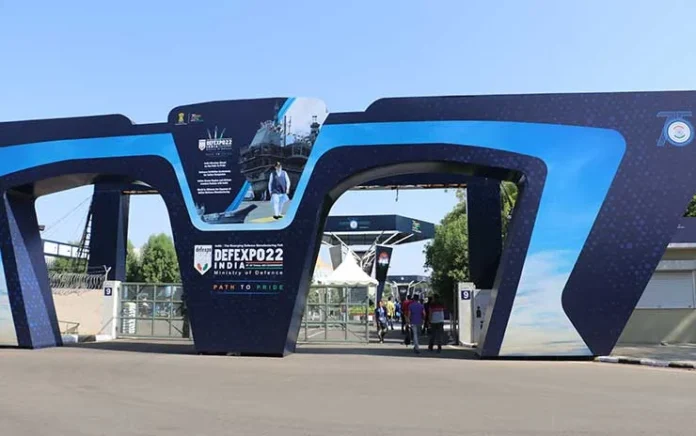The DefExpo 2022 (October 18-22) held in Gandhinagar (Gujarat), with the theme ‘Path to Pride’, boosted India’s ‘Make in India, Make for the World’ initiative with more than 300 partnerships, memorandums of understanding (MoUs), transfer of technology (ToT) agreements and product launches. It was the first-ever edition of DefExpo exclusively for Indian companies. The response from Indian companies was so huge that the closing date for registration had to be extended to October 5, 2022.
Defence procurement and defence acquisitions have remained constantly in the news. The Ministry of Defence has been periodically churning out bulky documents laying out detailed procedures amid media blitz that this is the ultimate. However, soon pitfalls are discovered owing to several factors: absence of due thought, hasty decisions and faulty implementation because of bureaucratic interference or political considerations. One example is the “offsets” clause which was introduced and the concerned companies have still not completed their obligations despite so many years and the Comptroller and Auditor General (CAG) pointing out the default. The fact that offsets were accorded to a 10-day old company of Anil Ambani in the Rafael deal had also created a furore in the media.
The Strategic Partnership (SP) in defence procurements has suffered from inadequate implementation. The policy of SP in the defence sector was promulgated on May 31, 2017, as Chapter-VII of Defence Procurement Procedure (DPP) – 2016 entitled ‘Revitalizing Defence Industrial Ecosystem through Strategic Partnerships’. Earlier, this policy had been approved by the Defence Acquisition Council (DAC) headed by the Defence Minister in May 2017 and was given the green signal by the Cabinet Committee on Security (CCS) on May 24, 2017.
A Press Information Bureau release dated March 12, 2018, quoted the reply given by the then Minister of State (MoS) for Defence, Subhash Bhamre in response to a question in Rajya Sabha, saying that the Strategic Partnership Model (SPM) is a different category of Capital Acquisition in addition to the existing categories as mentioned in Chapter-I of DPP-2016 i.e. ‘Buy (Indian-IDDM)’; ‘Buy (Indian)’; ‘Buy & Make (Indian)’; ‘Buy & Make’ and ‘Buy (Global)’. Further, the amount of investment and employment opportunities likely to be created cannot be quantified at this stage as the cases in the respective segments are at their initial / early stages.
The note from the MoS (Defence) explained that the policy is intended to institutionalise a transparent, objective and functional mechanism to encourage broader participation of the private sector, in addition to DPSUs / OFB, in the manufacture of defence platforms and equipment such as aircraft, submarines, helicopters and armoured vehicles. It will serve to enhance competition, increase efficiencies, facilitate faster and more significant absorption of technology, create a tiered industrial ecosystem, ensure development of a wider skill base and trigger innovation, leading to reduction in dependence on imports and greater self-reliance in meeting national security objectives. The following four segments have been identified for acquisition under SP route: fighter aircraft; helicopters; submarines, and armoured fighting vehicles (AFVs) / main battle tanks (MBTs).
Ever since the SPM was introduced, many have opined that this policy was initially meant to progressively build capabilities in the Indian “private sector” to design, develop and manufacture complex weapons for the future needs of the armed forces, however, the public sector also muscled its way in. This could well be true given the clout that the public sector has compared to the private sector but the fact remains that the ‘Strategic Partnership’ model continues to remain stuck in red tape since its promulgation on May 31, 2017 and it has really not taken off.
The most recent example is of the request for information (RFI) issued by the Ministry of Defence on July 20, 2021, for the construction of six submarines, worth 43,000 crore under the SP model. The initial deadline for responding to the RFP was November 2021. However, this had to be changed to November 2022, followed by a second postponement of the deadline to December 2022. The postponement of the deadline for response to the RFP is because the Naval Group of France and Rubin Design Bureau of Russia have officially intimated their inability to take part in the program. According to one media report, one of the primary reasons for their withdrawal reportedly is our insistence to have proven air-independent propulsion (AIP) technology.

Russia has been collaborating with India in the defence sector since the past several decades, the high point being BrahMos Aerospace Ltd. Moreover, unlike the West, Russia has not hesitated from giving us state-of-the-art technology, as well as transfer of technology (ToT). But with regard to the RFP in question, Andrey Baranov, Deputy Director General, Foreign Economic Activities at Russia’s Rubin Design Bureau, has said that the RFP demands a very strict timeline and plenty of responsibility to the designer who has no influence on the construction process that will happen in India. If timelines are not met, the penalty is very high, from the very beginning we have said it is not possible to make the first submarine in such a short time, and, the RFP was issued without addressing this concern.
It may be recalled that in 1997, the MoD had approved a plan to acquire 24 submarines under Project 75. Following the Kargil Conflict in 1999, the Cabinet Committee on Security (CCS) approved the older submarine building plan spanning 30 years that called for two parallel production lines, each constructing six submarines. Project 75 (P-75) was brought under the new plan, with the two production lines to be built under P-75 and Project 75 (India) or P-75(I) using ToT from foreign manufactures. In October 2014, the DAC decided to construct all six submarines in India under P-75(I) and later in June 2017, a decision was taken that the contract for construction of the submarines would be awarded under the new SP policy. In response to an expression of interest (EoI) issued in April 2019, Saab had withdrawn citing concerns about the rules defined in the SP policy.
Recent news reports indicate that the Ministry of Defence has made changes to the RFP for acquisition of six submarines under the SP model. The response from the concerned firms is not known yet since the second-time extended deadline for replying is December 2022. The important issue to note is that despite the rising threat in the waters of the Indo-Pacific, we have only made small progress by way of Project 75 since 1997 and none in Project 75 (I) under the SP model.
A review of the SP model is definitely warranted. It goes without saying that delays in acquisition of this nature increases the threat levels to our security, as well as the costs. Is it because of the escalating costs that lead to bigger under the table dealings that the bureaucracy is giving timelines which are considered impossible by the original equipment manufacturers (OEMs)? In addition, is there scope of giving more leeway to the OEMs as long as our national interests are not affected? It is also significant that the private industry in the defence sector is coming up fast, which should have happened years back – in line with developed nations. Therefore, it should not be a compulsion to include the public sector in “every” project if the private sector can fulfil the need by establishing additional production facilities as required to meet the requirement in the given time.
-The author is an Indian Army veteran. Views expressed are personal
The author is an Indian Army veteran. The views expressed are of the author and do not necessarily reflect the views of Raksha Anirveda






